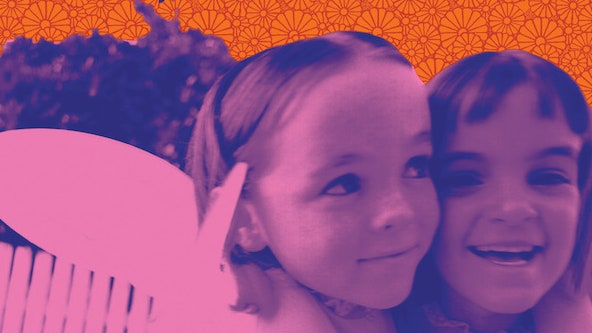
It was this softness, underpinning all the noise, that made the Pumpkins special. “I send a heart to all my dearies/When your life is so, so dreary/Dream,” Corgan whispered on “Mayonaise,” his phrasing straight out of a Victorian children’s novel, as the guitars bloomed overhead. His voice barely cuts through, just like Ozzy on the Sabbath records, but he doesn’t sound overwhelmed by the sound; he sounds swaddled in it. “I just want to be me/And when I can, I will,” he declares, not a master of reality but a refugee from it.
The two words most often used to describe the Pumpkins were “fluid” and “powerful.” Those two adjectives found their locus in Chamberlin’s drumming, which transformed the band’s songs into rivers. His touch was light—he rarely broke a stick on tour—and his idols weren’t the usual Godzilla stompers like Bonham and Moon, but jazz and swing players like Gene Krupa, Elvin Jones, David Garibaldi. He understood that true ferocity required as much delicacy as muscle. Whenever Iha and Corgan bent a string, he’d play a fill, turning each squeal into a hairpin turn. Chamberlin crafted his drum parts along with Corgan’s rhythm guitar, which meant you could hear the song’s melody in just his isolated drum track, and which infused the songs with a swaying, gentle cadence. Corgan liked to complain about his bandmates, but in Chamberlin, Corgan found a musician at whom he could throw everything—all his imperious demands for perfection, all his wildest ideas for where his music might go—and be rewarded.
Siamese Dream was a breakout success for the Pumpkins, eventually going 4x platinum. Suddenly, Corgan was a spokesperson, no longer sniping from the sidelines but uncomfortably the equal of his peers. The band headlined Lollapalooza, which Corgan was vocal about hating. He griped about not being “the cute one,” relegated to standing in the back on the band’s magazine covers. He carped ceaselessly about Iha and Wretzky, calling his band “these people I care about very much yet they continue to keep failing me.” He professed boredom with rock’n’roll, professed misery at its trappings. The minute Corgan left the studio or the stage, his dreamland vanished, and he sounded like a man who had crawled across the desert toward a mythical fountain only to taste saltwater. Corgan grimaced, wiped his mouth, and was left unsatisfied.
He already had his eye on the next horizon: a double album. His generation’s answer to The Wall. Only he could do it, he was convinced. Surely that would slake his thirst. “Nobody’s got the balls to take the pretentious ‘how dare you?’ move,” he said. “If I’m going to do it, now’s the fucking time. I’m already starting to hear minor grumblings about mortgages and stuff. It won’t be long before I start having children. Now is the fucking moment.” Better to exist in the dreamland, where perfect sounds could be made, and manipulated. On “Cherub Rock,” he howled “Let me out” from inside that sound, but he was barely audible—already a rat in a cage. Then he closed his mouth, and the guitar solo arced up from the center of the song. It was the purest sound of yearning he’s ever captured—a single high D, streaking like a flare gun into the night.
All products featured on Pitchfork are independently selected by our editors. However, when you buy something through our retail links, we may earn an affiliate commission.














